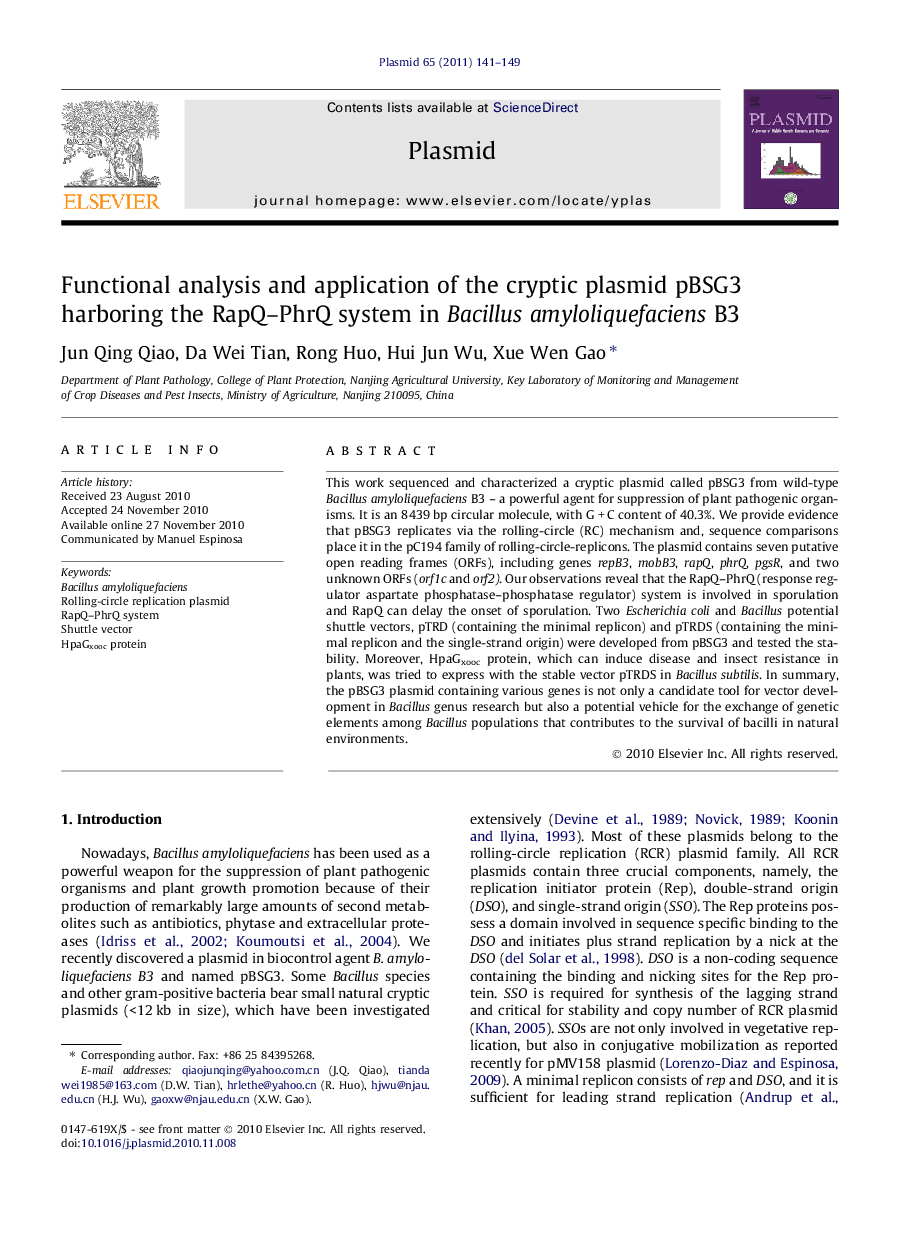| Article ID | Journal | Published Year | Pages | File Type |
|---|---|---|---|---|
| 2824275 | Plasmid | 2011 | 9 Pages |
Abstract
This work sequenced and characterized a cryptic plasmid called pBSG3 from wild-type Bacillus amyloliquefaciens B3 - a powerful agent for suppression of plant pathogenic organisms. It is an 8439Â bp circular molecule, with GÂ +Â C content of 40.3%. We provide evidence that pBSG3 replicates via the rolling-circle (RC) mechanism and, sequence comparisons place it in the pC194 family of rolling-circle-replicons. The plasmid contains seven putative open reading frames (ORFs), including genes repB3, mobB3, rapQ, phrQ, pgsR, and two unknown ORFs (orf1c and orf2). Our observations reveal that the RapQ-PhrQ (response regulator aspartate phosphatase-phosphatase regulator) system is involved in sporulation and RapQ can delay the onset of sporulation. Two Escherichia coli and Bacillus potential shuttle vectors, pTRD (containing the minimal replicon) and pTRDS (containing the minimal replicon and the single-strand origin) were developed from pBSG3 and tested the stability. Moreover, HpaGxooc protein, which can induce disease and insect resistance in plants, was tried to express with the stable vector pTRDS in Bacillus subtilis. In summary, the pBSG3 plasmid containing various genes is not only a candidate tool for vector development in Bacillus genus research but also a potential vehicle for the exchange of genetic elements among Bacillus populations that contributes to the survival of bacilli in natural environments.
Related Topics
Life Sciences
Biochemistry, Genetics and Molecular Biology
Genetics
Authors
Jun Qing Qiao, Da Wei Tian, Rong Huo, Hui Jun Wu, Xue Wen Gao,
